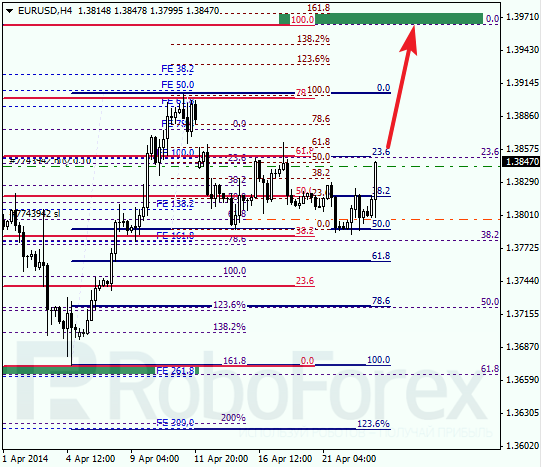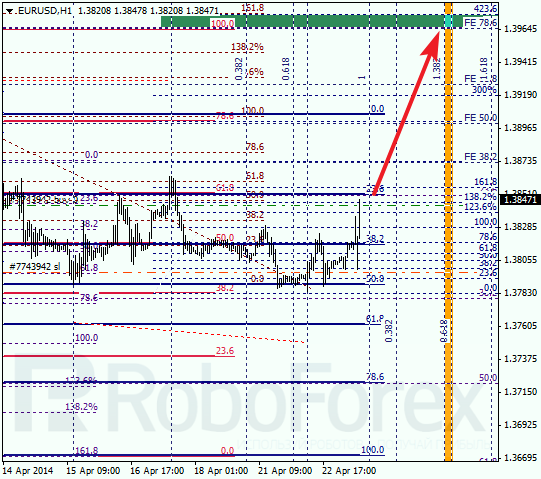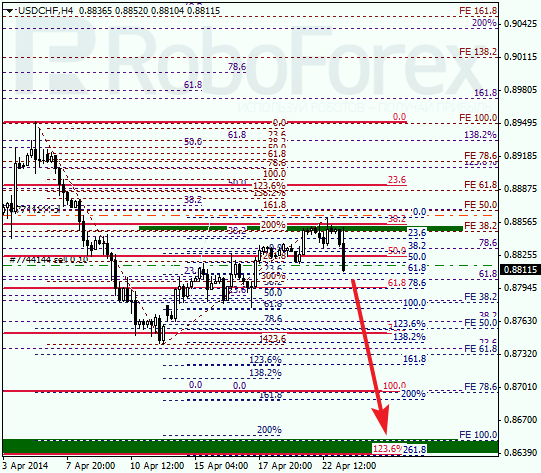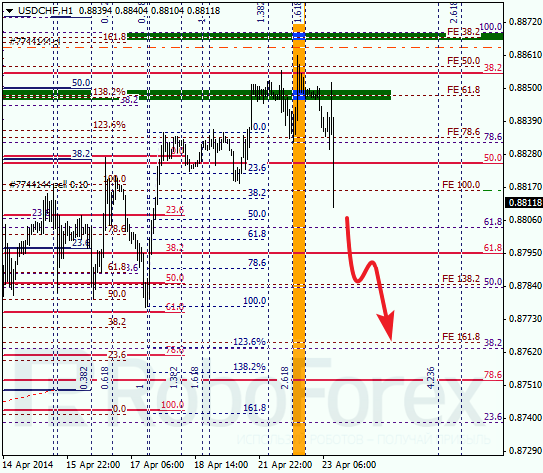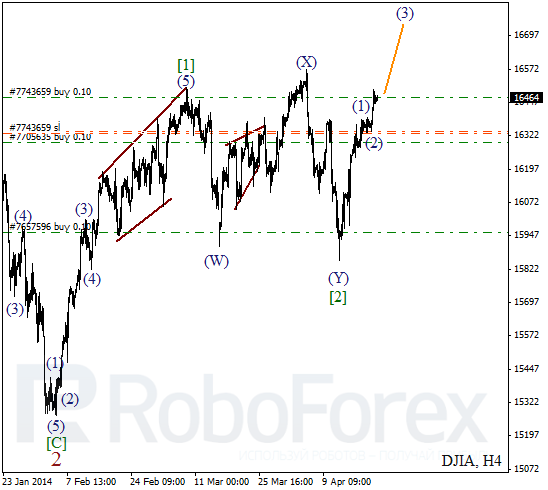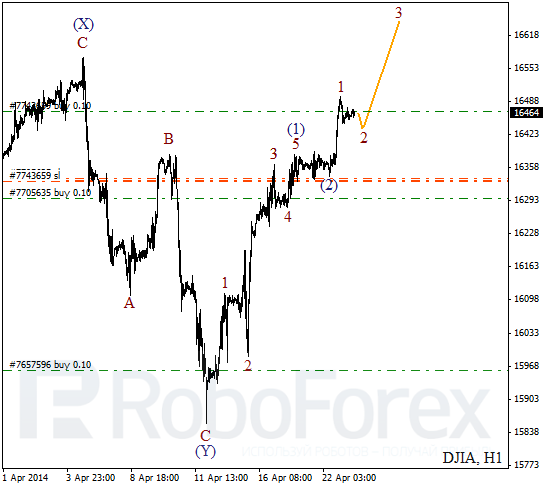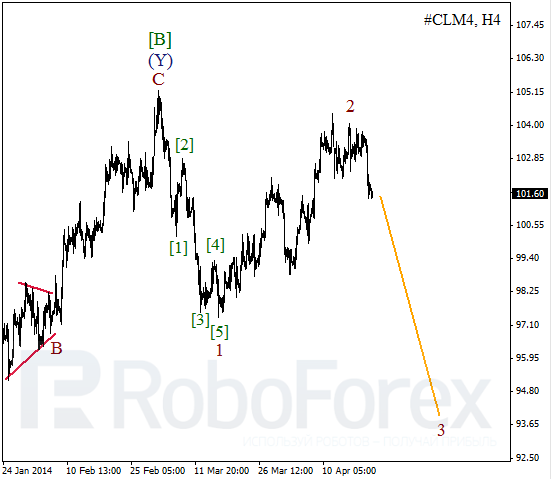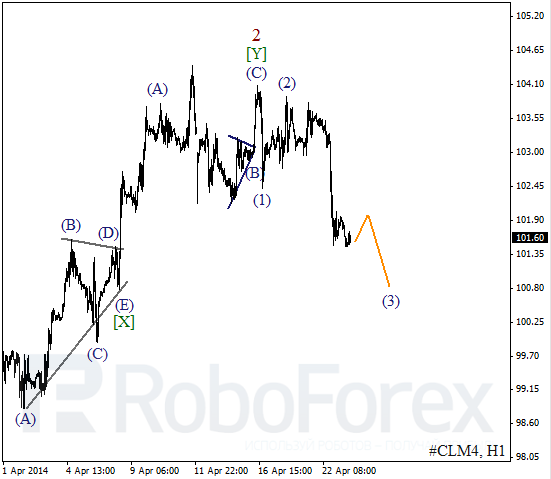Source: Kevin Michael Grace of The Mining Report (4/22/14)
http://www.theaureport.com/pub/na/night-of-the-living-dead-miners-rare-earth-zombies-attack-the-asx-and-tsx
In 2010, rare earth and specialty metals market froth had speculators throwing money at a sector they didn’t understand, and opportunistic resource company managers stepped up to take their money. Two years later, so-called zombies, the walking dead companies, lurk on the TSX and ASX exchanges, all talk and no product. As Richard Karn of Emerging Trends Report explains in his interview with The Mining Report, anemic cash flows will put many of these zombies to rest in the coming year, while the survivors—the companies that can drop a sample on an end-user’s desk for evaluation—will finally see the light of day.
The Mining Report: On the TSX Venture Exchange, there are hundreds of mining companies called “zombies,” that is, their market caps and cash balances are so low as to be companies in name only. How many zombie companies are there on the ASX?
Richard Karn: Unfortunately, Australia finds itself in much the same condition.
There are 707 mining and resource companies on the ASX. Of these, more than 400 have a market cap of less than AU$10 million (AU$10M). Furthermore, more than 200 have market caps of less than AU$2M and cash balances of less than AU$850,000 (AU$850K). With the cost of maintaining an ASX listing conservatively estimated to be in the range of AU$650K per year, and the end of the financial year looming (June 30, 2014), a number of companies are verging on insolvency.
TMR: How many of these ASX-listed zombies will disappear before the end of the current fiscal year?
RK: I have no way of knowing that, but I am aware of a number of companies that have cut their payrolls to the bone and are essentially in hibernation mode—barely surviving, with the remaining employees on significantly reduced salaries.
For Australian juniors, for all intents and purposes the commercial finance markets are closed and the fund-raising environment is simply hostile. Too many retail shareholders are trapped in unprofitable positions and are now largely unwilling to participate in capital raisings, not the least because there is little reason to think the situation will improve anytime soon.
Asset sales in this market are similarly brutal: It’s a buyer’s market and many of these small companies are loathe to let go of assets they have developed for the merest fraction of what they have spent.
TMR: Will this culling of moribund companies be a good thing?
RK: Yes. Whether the commodity boom of the last decade is over or simply correcting, there is little question a considerable amount of froth developed in the specialty metal sector and excesses that were accumulated need to be worked off.
And that is a process, not an event, meaning it takes time.
We attribute the spark for the specialty metal boom that peaked in early to mid-2012 to China’s June 2010 announcement that it was curtailing rare earth element (REE) exports and increasing the taxes to do so. That China had done exactly the same thing for the previous two years had not mattered to the market, but suddenly, inexplicably, it mattered to everyone.
Potential supply disruptions for a whole range of specialty metals critical to a wide range of electronic, green and military applications became the topic de jour, spawning Congressional hearings, Department of Defense white papers and World Trade Organization (WTO) actions.
Suddenly, specialty metal projects were on the receiving end of a flood of hot money, and hot money flowing without regard to reality always and everywhere leads to excesses. And the REEs were the poster children, though by no means the only specialty metal projects to attract these speculative capital flows.
At one point, we were aware of more than 720 listed companies globally that were promoting REE projects. We estimated that it would be miraculous if 18 of those projects were in production by 2020 because most of those companies had no idea of what was involved with putting a REE project into production, but that did not stop some opportunistic behavior on the part of both speculators and junior resource company managements.
One example of this suffices to demonstrate the madness of the crowds in this regard. We know of a junior resource company, which shall remain nameless, that was sitting on a tenement they’d acquired a few years before during the uranium boom that, as is often the case, had attendant relatively minor concentrations of REEs. Management flew a geologist out into “the back of beyond” in Western Australia, plunked him down by an outcrop, and took some photos of the geologist hammering a few samples from the rock of its “newest REE discovery.” The geologist was so embarrassed by the sham that he kept tilting his head to make sure his face was not identifiable in the photographs—but the share price damn near doubled in the following few days.
This is the type of behavior that is spawned by a speculative boom and must be worked through before the good companies can rise to the top.
Another aspect is simply that people tend to extrapolate good times into perpetuity, and junior resource companies’ managements are not immune to this temptation.
It is very common for a small cap, even a micro cap, Australian resource company to have a number of very good projects; the problem is they lack the funds or expertise to develop any of them.
Australia boasts a very rich geology, and Australians exploration companies are very good at finding and conducting early-stage development of projects, typically through the JORC-compliant stage, at which point they try to spin out the asset or try to sell it to a larger company with the financial wherewithal and expertise to develop it.
But if there are no buyers, the costs of maintaining the asset can become fairly onerous—and the more projects a company has, the higher the cost of maintaining them. That is a very real cash drain today.
In the final shakeout we are anticipating, a number of mismanaged companies will deservedly go under—as, unfortunately, will some quite good companies—and some very good projects will be picked up very cheaply.
And being able to pick up outstanding assets for very little money always marks the bottom of the cycle, because it increases the odds of success as the cycle turns up.
TMR: What are “specialty metals,” and why are specialty metal projects so difficult to put into production?
RK: Specialty metals can be generally thought of as metals with extraordinary properties that are produced in small amounts for relatively specific applications.
Many, such as graphite, tungsten, vanadium and molybdenum, are of a more industrial nature and are primarily alloying agents for base metals. As such, their prices are effectively leveraged to those base metals.
Others, such as germanium, tellurium, ruthenium, antimony or REEs, find wide use (albeit in trace amounts) in consumer electronics, green and military applications, but the complex metallurgy and highly specialized, technical uses are often difficult to understand—sometimes even by end-users. The prices of these metals tend to be discovery-driven rather than GDP-correlated in that it takes very little new marginal demand to create price shocks.
We contend, however, that the biggest impediment to putting a specialty metal project into production is not the metallurgy but the lack of commercial finance. Because production of many specialty metals is so small, literally only tens or hundreds of tons per year, they often do not trade on a futures exchange, so a commercial bank cannot hedge its risk by selling a certain percentage of production forward into the market. Unless there is sufficient hedgeable byproduct, the average specialty metals project constitutes an unacceptable risk.
Taken together, we can certainly make the case that many specialty metal projects would profit from staying private—as simply being a smallish JV between the producer and the end-user, with the end-user providing the capital to put the project into production in return for guaranteed long-term supply and a share of the profits.
TMR: Why are specialty metals so important to emerging technologies, and given that they are so difficult and costly to mine, what prevents technology companies from using substitutes or workarounds?
RK: Each specialty metal has unique properties that render it better in a given application than another metal. Certainly there can be a degree of substitution across metal groups, such as is the case with palladium for platinum in catalytic converters, but that is the exception rather than the rule; by and large the substitute of one specialty metal for another produces an inferior result, for example the end product may be heavier or less efficient in terms of energy use, etc.
When a number of these specialty metals are combined in alloys that produce unique performance characteristics, such as the super alloys used in jet engine turbine blades, it is usually not possible to substitute one specialty metal for another because the balance trying to be struck in the design specifications is so fine, so precise, that there is no room for half measures or workarounds. In these types of applications, such trace amounts are used that availability, not price, is the primary concern.
And as can be the case with many specialty metals, the metals may be byproducts of other primary mine production, such as tellurium from copper production or ruthenium from platinum group metals (PGM) production, so they are largely supply inelastic as well.
TMR: Finding end-users is critical to specialty metals companies. Is this a radically different skill set than what junior resource executives usually bring to the table?
RK: Putting aside the previously discussed opportunistic self-promotion, not really. The critical skill set revolves around actually producing specialty metals for end-users to evaluate, not talking about it.
End-users are sick of talk: they want to see product.
All the salesmanship in the world does not compare with a managing director being able to walk into an end-user’s office and dropping a kilogram product sample on his desk for the company to evaluate. That is the legitimate start of a dialogue that leads to off-take and funding agreements.
The companies we will discuss briefly in a moment can do that—are doing that; few others can.
As mentioned, we believe there will be a final washout in the specialty metal space—a point where especially retail investors just say they want out at any price rather than losing everything when the company goes into administration.
We further believe this will result in money being funneled into those companies that are delivering on their promises—those companies that put their heads down, kept their mouths shut, and have done what they needed to do to put their projects into production.
These companies have made a lot of sacrifices and may not be making a lot of money today, but they have succeeded to the extent that they have products to show end-users, which in the current environment in the specialty metal sector is more of an accomplishment than the market realizes—or currently values.
As more and more companies fall by the wayside, investors—not the speculators who have vacated the specialty metal space and are busy chasing the latest craze, like buying Greek debt—as well as specialty metal end-users, will start to focus on those companies that are delivering on their promises, and those companies will be the recipients of the resulting capital flows.
TMR: What are the ASX-listed companies you consider models for bringing specialty metals to market?
RK: We’ve spent most of the last five years looking at precious and specialty metal projects in Australia, and three companies that we wrote up early in our investigations continue to impress us because they are delivering on their promises to the market. We have owned and traded around positions in these companies for a long time.
In this regard they are models of innovation and perseverance because as anyone down under will tell you, the markets have been bloody hard for at least the last two years.
So three companies we’ve been modeling in our presentations and articles as successes that will eventually attract significant amounts of capital are Alkane Resources Ltd. (ANLKY:OTCQX; ALK:ASX), Valence Industries Ltd. (VXL:ASX) and Carbine Tungsten Ltd. (CNQ:ASX).
TMR: Alkane’s Dubbo zirconium-niobium-REE project has a capex of $1B. How can this company raise that much money in today’s markets, and what is the role of its Tormingley gold mine in this respect?
RK: Alkane has had a demonstration plant at the Australian Nuclear Science and Technology Organization for nearly six years and is one of the few companies in the space that has been able to deliver samples across its entire product line for end-users to evaluate.
This has led to Treibacher committing to market the entire first five years’ production of the Alkane’s ferro-niobium product. Shin-Etsu, the Japanese chemical giant, has signed an MoU to toll treat Alkane’s REE concentrates with the option to purchase a range of products; news of the MoU being converted into a contract is pending. Talks are ongoing with a range of Japanese, Korean and EU end-users for Alkane’s line of zirconia compounds and other REE products. By the end of the calendar year, Alkane expects to have a number of these agreements finalized.
In addition to this kind of standard project finance, Alkane expects to conclude a strategic investment by sovereigns and key product end-users by year-end to purchase 10-15% of the Dubbo Zirconia project; that event alone will force a significant revaluation of the entire company.
Alkane is also in talks with various entities regarding Export Credit Agency debt facilities, which amount to substantial sovereign institutional loans on favorable terms for large projects deemed to be of strategic importance.
Once these primary debt facilities have been agreed, which will be very positive for Alkane’s share price, the company may consider an equity raising, but one of the things we appreciate most about Alkane has been management’s ability to minimize shareholder dilution, which likely explains its loyal shareholder base.
In February of this year, Alkane put its self-funded Tomingley Gold project into production—on time and on budget.
Management felt the company’s funds were best used to generate a minimum of eight years of cash flow from gold production to further the Dubbo Zirconia project. Toward that end, Alkane has hedged its first 25,000 ounces of gold production forward (at AU$1,449 per ounce) with a May 16, 2014 expiry, which can also be rolled into future contracts. Alkane will continue to hedge its production because, quite simply, it wants to lock in positive cash flow going forward rather than speculate on the gold price.
Tomingley, in effect, will help Alkane fund development of the Dubbo Zirconia project without having to go to the debt markets or their shareholders any more than is absolutely necessary.
TMR: There is a glut of graphite projects around the world. How does Valence’s Uley project stand apart from its competitors?
RK: First, I do not buy the submission that there is a glut of graphite projects globally.
I believe there is a glut of graphite promoters who have made some pretty grandiose claims over the past few years because it helped their share price, but very few that have delivered on the promises they have made to the market.
What has always attracted me to projects like Valence Industry’s Uley graphite project, or the Carbine Tungsten’s project for that matter, is that they were historic producers that were closed not due to declining grades or lack of resource but because the price of the underlying mineral collapsed. In the case of both graphite and tungsten, the Chinese flooded the market with cheap supply, rendering many operations globally uneconomic.
Fast forward 20 or 30 years, and Chinese control of various specialty metal markets, ranging from REEs to antimony to graphite and tungsten, is such that end-users of these metals have finally started to sober up from binging on New Age economic drivel like “just in time delivery,” which simply cannot apply to the specialty metal supply and are seriously questioning the security of their supply chain.
We contend that at some point in the near future, non-Sino sources of specialty metals will actually command a premium to the quoted market price because ensured supply will trump price concerns. The arms race in Asia, which the western press has been studiously ignoring, is accelerating and will exacerbate this situation.
Valence Industries’ Uley graphite project in the Eyre Peninsula of South Australia will be, as management promised, the first graphite project outside of China to be put into production in more than a decade.
Valence Industries was able to raise $20M via a fully underwritten compliance listing in February of this year, and has spent $3M refurbishing the existing nameplate 20,000 ton-per-year (20 Ktpa) plant it expects to have in operation by the end of April or beginning of May.
Interestingly, its first nine months of production will be sourced primarily from ~74,000 tons of stockpiled material that grades 8-10% graphitic carbon and 600-800 tons of fine-flake material ejected from previous shutdowns, which grade 30-40% graphitic carbon.
Management estimates all-in costs of full production will be in the AU$550-600/ton range, and Uley will produce at least five products ranging from US$890 to US$2,500/ton.
In April, Valence began shipping 30 tons of processed graphite it re-sized and re-bagged as its plant gradually comes back on-line, and its customers have provided positive feedback regarding its high quality and purity.
Continuing product acceptance is key to its success.
While Phase 1 production will be sourced from the refurbished plant, a bankable feasibility study (BFS) is due in June, 2014 for the addition of a AU$34M 60 Ktpa plant that will operate side-by-side with the existing plant until it is no longer economic to do so.
Although two to three years of production from the existing plant at Uley would fund the new plant, management has been able to secure indicative offers for the entire AU$34M to expedite expansion. These offers are primarily in the form of contract factor agreements with Singaporean and English firms, which in effect are the sale of off-take contracts for 90% of the face value of the contracts. There will likely be further off-take agreements and private placements with institutional investors, but the suggestion is that there will be little equity dilution going forward.
This is all well and good, but where things get quite interesting from our point of view is with Valence Industries’ recent announcement that they have been signing agreements to facilitate their transition from a graphite miner into a vertically integrated graphitic carbon manufacturer.
This makes sense for an operation like Uley, which once steady state production is achieved is after all essentially a simple, dig-and-deliver graphite quarrying operation.
But since 2012, both Monash University and the University of Adelaide have successfully produced graphene from Uley graphite (using two distinctly different processes), and the idea of moving up the value-add chain holds remarkable promise.
Interestingly, the University of Adelaide process involves no “wet” chemistry, and 25 kilograms (25 kg) of Uley graphite produced roughly 5 kg of graphene, which Valence is considering selling through its website to researchers globally.
Valence recently signed an agreement with the University of Adelaide to share a AU$23m high tech R&D facility and high purity plant in Adelaide that would enable Valence to employ a variant on jet milling and other techniques to produce the potato-shaped flake required to produce graphene in bulk. They envision producing as much as 30,000 tons of manufactured, or upgraded, graphite products within 3 years—and these products are anticipated to sell for $5,000 to $10,000/ton.
That would be something to see.
TMR: Discuss the three phases of Carbine’s Mt. Carbine tungsten operation. How did a company with a market cap of less than $20M bring on board a giant like Mitsubishi Corp as an offtake partner?
RK: If I might answer the second question first, to explain the reasoning behind why one of the fifty largest corporations in the world would effectively partner with a micro cap like Carbine Tungsten, I would remind readers that over the last few years, relations between Japan and China have become increasingly strained. In 2010, China cut off REE supply to Japan in retaliation for a relatively minor fishing incident in the vicinity of some disputed islands in the South China Sea.
Since tungsten is one of the most strategic of specialty metals, being critical in a range of industrial and military applications, and China largely controls the global tungsten market, we find it entirely understandable that the Japanese would be determined to secure a reliable, non-Sino source.
Carbine Tungsten meets that need.
Japan, having been made painfully aware of its supply chain vulnerability, has reacted in an entirely rational manner. With global instability on the rise, we expect security of supply to become an increasingly dominant issue. The West, and especially the EU, will follow suit shortly: They simply have no choice.
As for Carbine Tungsten’s circuitous route to production, I’ve mentioned that securing commercial funding for specialty metal projects is nigh on impossible these days. If that were not enough, even in good times commercial banks do not fund tailings reprocessing operations, so Carbine Tungsten getting its operation going at all is something of a feat of dogged determination and perseverance.
Mt Carbine was a truly massive operation that produced tungsten from 1973 to 1987. The average grade was 0.16% WO3, but at the time they were using visual ore sorting and only targeting Wolframite, which is black; Scheelite, the other form of tungsten, is white and difficult to differentiate from quartz and was ignored for economic reasons, despite constituting roughly 20% of the tungsten content. The Mt Carbine mine was operated by the Roche brothers, Sandvik, and Treibacher until the Chinese flooded the market with tungsten and undermined the economics of the project. It has sat dormant since.
Unable to secure funding, in 2011 Carbine Tungsten went to its shareholders for a little more than AU$1M to purchase a used plant to begin reprocessing the 2 million tons (2 Mt) of Scheelite-rich tailings, which grade 0.1% WO3.
Unfortunately, the plant it purchased could only recover WO3 in the 75 micron or larger range, but the company was able to recover sufficient product for Mitsubishi to evaluate. In this respect, the plant amounted to little more than a commercial demonstration plant Carbine Tungsten has fine-tuned over the last 22 months, growing average production to 1,500 metric ton units per month (1,500 MTU/month).
Mitsubishi has purchased 100% of production and participated further by means of two pre-paid off-take agreements. Between the improved OPEX and the AusIndustry R&D refund, the tailings operation is operating at breakeven or a small profit. More importantly, it has cemented its relationship with Mitsubishi.
The company is currently trialing a Wet High Intensity Magnetic Separation (WHIMS) unit to recover the sub-50 micron fraction, which means that an AU$500K-800K investment could help it recover an additional AU$8M in WO3 from the tailings, doubling production and rendering the project solidly profitable.
Phase 2 will see Carbine Tungsten add a AU$14M expansion to its plant to process 12 Mt of mineralized waste grading 0.75% WO3, but again that grade is based on historic figures that did not include Scheelite, so a rough doubling of that grade would not be an unreasonable expectation. The modular plant will be the backbone of the larger still Phase 3 plant and will incorporate intellectual property (IP) from the ongoing R&D, as well as x-ray sorting to improve mill feed and recoveries, which will substantially improve profitability. Mitsubishi has committed to taking 80% of production from Phase 2.
An off-take for a funding agreement with Mitsubishi for the entire AU$14M required for the plant is pending, but curiously it recently paid Carbine Tungsten AU$1M for 2.7% of Phase 2 production. This means that the Japanese, who have been conducting due diligence on the project for a number of years now, apparently place a value in the AU$36-37M range just for Phase 2, while the market as a whole only values Carbine Tungsten in its entirety at roughly AU$23M.
Phase 3 will see the return to full-scale open pit mining. Mt Carbine’s resource measures 47 Mt grading 0.13% WO3, and there is a high grade zone of 4.5 Mt grading 0.32 % WO3. Mota-Engil invested $2M in Carbine Tungsten in 2013 for hard rock development, a feasibility study and approvals.
The return to full-scale mining would require an additional AU$40M plant expansion but would lead to production of 2,650 tpa of WO3 within 18 months of securing financing. Mitsubishi has committed to taking 50% of Phase 3 production. There is also significant exploration upside both from the Iron Duke deposit, which is a new discovery, and Petersen’s Lode, a high-grade (6%) historic prospect.
TMR: Richard, thank you for your detailed insights.
RK: My pleasure.
As managing editor of The Emerging Trends Report, Richard Karn has a broad, multi-disciplinary background and a working knowledge of precious and specialty metals, as well as considerable research, analytical and writing experience. The first nine Emerging Trends Reports have been re-evaluated and updated published in e-book form, as Credit & Credibility. He has written for publications ranging from Barron’s, Kitco and Fullermoney to Financial Sense Online.
Want to read more Mining Report interviews like this? Sign up for our free e-newsletter, and you’ll learn when new articles have been published. To view recent interviews with industry analysts and commentators, visit The Mining Report homepage.
DISCLOSURE:
1) Kevin Michael Grace conducted this interview for Streetwise Reports LLC, publisher of The Gold Report, The Energy Report, The Life Sciences Report and The Mining Report, and provides services to Streetwise Reports as an independent contractor. He or his family owns shares of the following companies mentioned in this interview: None.
2) The following companies mentioned in the interview are sponsors of Streetwise Reports: Alkane Resources Ltd. and Carbine Tungsten Ltd. Streetwise Reports does not accept stock in exchange for its services.
3) Richard Karn: I own, or my family owns, shares of the following companies mentioned in this interview: Alkane Resources Ltd., Valence Industries Ltd. and Carbine Tungsten Ltd. I personally am, or my family is, paid by the following companies mentioned in this interview: None. My company has a financial relationship with the following companies mentioned in this interview: None. I was not paid by Streetwise Reports for participating in this interview. Comments and opinions expressed are my own comments and opinions. I had the opportunity to review the interview for accuracy as of the date of the interview and am responsible for the content of the interview.
4) Interviews are edited for clarity. Streetwise Reports does not make editorial comments or change experts’ statements without their consent.
5) The interview does not constitute investment advice. Each reader is encouraged to consult with his or her individual financial professional and any action a reader takes as a result of information presented here is his or her own responsibility. By opening this page, each reader accepts and agrees to Streetwise Reports’ terms of use and full legal disclaimer.
6) From time to time, Streetwise Reports LLC and its directors, officers, employees or members of their families, as well as persons interviewed for articles and interviews on the site, may have a long or short position in securities mentioned. Directors, officers, employees or members of their families are prohibited from making purchases and/or sales of those securities in the open market or otherwise during the up-to-four-week interval from the time of the interview until after it publishes.
Streetwise – The Minig Report is Copyright © 2014 by Streetwise Reports LLC. All rights are reserved. Streetwise Reports LLC hereby grants an unrestricted license to use or disseminate this copyrighted material (i) only in whole (and always including this disclaimer), but (ii) never in part.
Streetwise Reports LLC does not guarantee the accuracy or thoroughness of the information reported.
Streetwise Reports LLC receives a fee from companies that are listed on the home page in the In This Issue section. Their sponsor pages may be considered advertising for the purposes of 18 U.S.C. 1734.
Participating companies provide the logos used in The Mining Report. These logos are trademarks and are the property of the individual companies.
101 Second St., Suite 110
Petaluma, CA 94952
Tel.: (707) 981-8999
Fax: (707) 981-8998
Email: [email protected]




